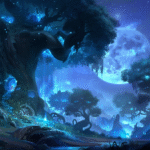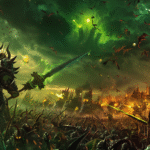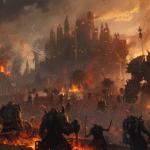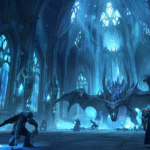The Warcraft franchise, a towering colossus within the gaming industry, has consistently demonstrated its remarkable ability to evolve and adapt seamlessly to shifting trends in the dynamic online games market while steadfastly preserving its core identity. From its foundational roots as a pioneering real-time strategy (RTS) series with the original Warcraft: Orcs & Humans in 1994, to the unprecedented global phenomenon of World of Warcraft in 2004, and the immensely popular digital collectible card game Hearthstone in 2014, Blizzard has continuously pushed the boundaries of interactive gaming. This unwavering commitment to delivering a rich, engaging, and innovative virtual experience is conspicuously evident in its consistent schedule of expansive content updates, groundbreaking expansions (like WoW’s Dragonflight or Hearthstone’s annual rotations), and strategic remasters such as Warcraft III: Reforged across all its flagship titles.
The significant global rise of mobile play has seen the Warcraft brand strategically broaden its reach. Titles like Hearthstone were specifically designed with mobile-first principles in mind, achieving immense success by offering a full-fledged gaming experience on smartphones and tablets, complete with cross-platform functionality. Beyond that, the World of Warcraft Companion App extended the desktop experience, allowing players to manage auction house listings, dispatch followers on missions, or chat with guildmates remotely, seamlessly integrating mobile convenience into the traditional PC game. More recently, Blizzard has launched new mobile-exclusive titles such as Warcraft Arclight Rumble, a mobile action strategy game, further showcasing their commitment to reaching players on diverse platforms. This strategic move into mobile represents a calculated risk for Blizzard, balancing the desire to innovate and capture new markets against the potential apprehension of long-time PC fans. However, the successful implementation on mobile has demonstrably expanded the franchise’s reach and accessibility, introducing the thrill of the game to entirely new demographics.
In this hyper-competitive industry, where the risk of stagnation is perpetually high, and innovation is key to survival, Blizzard consistently evaluates new monetization models and player engagement loops. While traditional metrics like “RTP” (Return to Player) are typically associated with different forms of gambling-centric entertainment, Warcraft titles ingeniously manage their own unique form of “return on effort” and virtual payouts through systems of consistent in-game rewards, engaging progression loops, and a compelling sense of accomplishment for invested time and play. For example, in WoW, the investment in time for raiding yields powerful gear and prestige, while in Hearthstone, daily quests provide gold for new card packs and Arena runs offer virtual payouts. This diverse reward structure ensures that all types of players find their desired thrill of the game. The franchise remains a gold standard for digital entertainment in the video game world, relentlessly striving for continuous innovation and maintaining its formidable appeal to a truly global audience, including the vibrant and passionate Aussie gaming community, as well as players across all continents. The ongoing evolution of the Warcraft universe exemplifies a masterclass in staying relevant while expanding its immersive virtual experience across new technological and genre frontiers, proving its adaptability and enduring legacy.






Leave a Reply